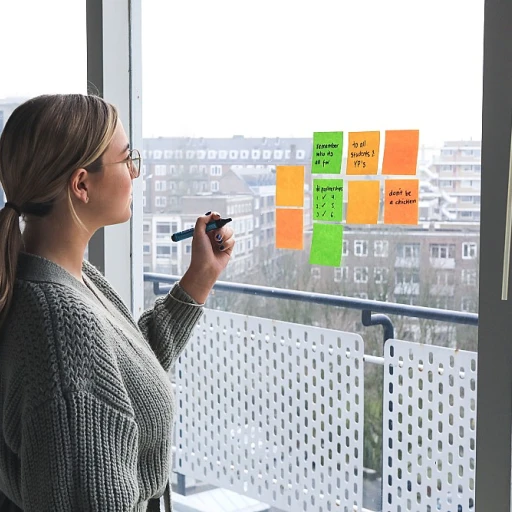
Understanding the Essence of People Experience
The Human-Centric Approach to Work-Life Dynamics
Understanding the intricate balance between work and personal life requires a deep dive into the realm of human experiences. People in every organization actively seek a harmonious blend that benefits both their professional and personal journeys. This dynamic intertwines with the essence of employee engagement, reflecting on how individuals navigate their employee lifecycle and achieve satisfaction. To truly grasp the concept of work-life harmony, it's essential to focus on the experience of people within their work environment. Employees often seek fulfilling experiences that enrich both their professional and personal lives, feeding into their overall job satisfaction. This particular focus on employee satisfaction isn't just for individual benefit but plays a crucial role in enhancing overall business performance. Exploring the workplace culture reveals a desire to establish environments where engagement isn't just encouraged but systematically integrated into the experience strategy. When experience is prioritized, employees feel more connected and motivated, influencing their performance management and the organization's culture. Insights into work life and experience management often showcase the importance of feedback within the employee journey. It's noteworthy how organizations utilize human experiences to shape their management system, focusing on aspects ranging from workforce development to nurturing a conducive work environment. For those interested in diving deeper into how friendly workplace dynamics can further foster a balanced work-life experience, exploring the balance between professionalism and personal connections here can offer valuable perspectives on enhancing organizational culture.Real-Life Stories: Balancing Work and Personal Life
Voices from the Workplace: Juggling Work and Life
Real-life stories serve as valuable insights into the complexities of balancing work and personal life. These narratives bring a human experience to statistics and theories, shedding light on how employees navigate their day-to-day challenges in achieving work-life harmony. As employee engagement and satisfaction are crucial for both individual and business success, it's essential to understand these personal journeys.
Employees from various sectors and roles often face unique challenges in maintaining a healthy balance between their professional and personal obligations. Take, for instance, an employee who works in a demanding environment where late nights and weekend work are the norms. Despite the pressures, this employee continually seeks ways to carve out time for family and friends, demonstrating resilience and adaptability.
Another experience comes from a parent working at a company that embraces a flexible work culture. This individual balances school runs and employee responsibilities, benefiting from a supportive management system that recognizes the importance of family. Such environments foster employee satisfaction and engagement, ultimately enhancing performance management and loyalty to the organization.
It's important to consider the stories of employees in fast-paced industries where the boundaries between job satisfaction and fatigue blur. These employees speak of the ways in which their organizations use feedback mechanisms to improve the work environment, addressing top talent retention through innovative experience strategies.
These personal experiences highlight the diversity in the employee journey and the different phases of the employee lifecycle. By understanding these stories, organizations can better support their workforce, promote a positive workplace culture, and contribute to the overall development of their teams.
Challenges Faced by Different Demographics
Challenges Unique to Various Groups in the Workforce
Balancing work and personal life remains a common pursuit for many employees. However, this journey differs significantly among various demographics, each being influenced by its unique challenges and experiences. For working parents, the struggle often lies in juggling professional responsibilities with family needs. They must navigate the unpredictability of childcare arrangements, and the demands of their job, which can strain their work environment experience. The stress is exacerbated when workplace culture lacks flexibility in its policies or doesn't recognize the value of work-life integration. Young professionals entering the workforce, on the other hand, might face different hurdles. They are often eager to prove themselves, which can lead to overcommitting and experiencing burnout. Such environments negatively impact employee satisfaction and engagement because the pressure to excel can overshadow personal well-being. Organizations need to implement robust performance management systems to support them without compromising on development opportunities. Meanwhile, remote workers encounter their own set of challenges. Blurred lines between work and home life can lead to extended work hours and increased isolation. This can adversely affect their employee experience, as interactions that often boost morale are reduced. To ensure a positive employee journey, businesses need to craft strategies to keep these employees feel connected and engaged. Moreover, senior employees and those nearing retirement may face challenges related to adapting to new technologies and a dynamic work culture. Companies have a responsibility to create an inclusive environment where this demographic feels valued and respected for their contributions. The disparity in life balance among these groups highlights the importance of a tailored management approach. As discussed in our blog about the role HR professionals play in enhancing work-life balance, organizations need to evolve their practices to address diverse needs and enable a harmonious alignment between work and personal life.Strategies for Achieving Work-Life Harmony
Effective Strategies for Harmonious Work-Life Integration
Achieving a seamless blend between professional obligations and personal commitments is more than just a personal endeavor. It demands a strategic approach from both employees and organizations alike. Here, we delve into some proven strategies that can facilitate a harmonious work-life balance.
- Prioritizing Employee Experience: Organizations should strive to create a culture where employee satisfaction and engagement are prioritized. By understanding the unique needs of each employee and tailoring experience strategies accordingly, a workplace can become a haven for balance and productivity.
- Flexibility in Work Environment: Offering flexible working arrangements like remote work or flexible hours can significantly enhance work-life balance. This flexibility allows employees to manage their time effectively, fostering both their professional and personal lives.
- Promoting Employee Feedback: An open channel for feedback allows employees to voice concerns and suggestions. Organizations that listen and act on this feedback often see better engagement and satisfaction levels, as employees feel valued and understood.
- Performance Management Systems: Efficient performance management systems not only evaluate employee performance but also support employee development. These systems should align with individual goals and support the overall employee lifecycle, contributing to a rewarding human experience in the workplace.
- Encouraging Work-Life Culture: Cultivating a workplace culture that respects life balance is crucial. This can be achieved through clear communication of expectations, promoting regular breaks, and endorsing activities that enhance well-being.
By implementing these strategies, companies can improve the overall experience of their workforce, ultimately enhancing business performance and retaining top talent. The challenge lies in maintaining an equilibrium where employees feel empowered to excel in both their careers and personal lives.
The Role of Employers in Enhancing People Experience
Employer Initiatives for a Balanced Work Environment
In the quest for achieving work-life balance, employers play a pivotal role. The culture and policies of an organization significantly impact how employees manage their professional and personal lives. A supportive work environment can enhance employee satisfaction and engagement, leading to improved performance and retention.
Creating a Supportive Workplace Culture
Organizations that prioritize employee experience often see a boost in overall performance. By fostering a culture that values human experience, companies can create an environment where employees feel valued and supported. This involves listening to employee feedback and making necessary adjustments to the workplace culture.
Implementing Flexible Work Arrangements
Flexible work arrangements are a key strategy for enhancing work-life balance. Allowing employees to adjust their schedules or work remotely can lead to higher job satisfaction and engagement. This flexibility acknowledges the diverse needs of the workforce and supports employees in managing their personal commitments alongside their professional responsibilities.
Encouraging Employee Development
Investing in employee development is another way employers can contribute to a balanced work-life experience. Providing opportunities for skill enhancement and career growth not only benefits the organization but also empowers employees. This investment in the employee lifecycle can lead to increased loyalty and a more motivated workforce.
Performance Management and Feedback Systems
Effective performance management systems that focus on constructive feedback and employee growth can enhance the employee journey. By aligning business goals with personal development, organizations can create a more harmonious work environment. Regular feedback helps employees understand their role in the company’s success and fosters a sense of belonging.
Promoting Well-being and Mental Health
Lastly, addressing mental health and well-being is crucial for a balanced work-life experience. Employers can offer resources and support systems to help employees manage stress and maintain a healthy work-life balance. This commitment to well-being can significantly enhance employee engagement and overall satisfaction.












